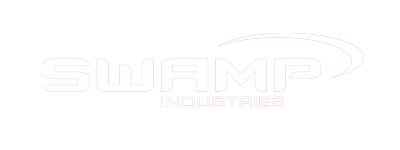Choosing the best USB Microphones for Podcasting
Posted: 3 June 2018
Synopsis: Podcasting has become a phenomena, and creating a professional-sounding podcast is not as simple as it might seem. USB microphones make podcasting simple as they do not require any external audio interface or phantom power, simply plug in and record.

The podcasting boom over the past few years has led to a proliferation in the development and selection of USB microphones. One of the easiest and effective solutions available, a USB mic comes in several form factors, catering for those podcasting from home or office, travelers, and project studios. No matter if you are performing and recording a solo podcast, or one which involves more than one talking guest, or if you are on the road and need to record a podcast, there are several great options for you.
Podcast creators are a widely diverse group of creatives - some have little or no experience in recording voice and music. Many quickly learn the importance of the role of the microphone to create professional sounding podcasts.
One of the first considerations should be whether to go condenser or dynamic. A USB condenser mic rivals the sound of studio microphones with bright, clear recordings. Though be wary of their sensitivity and pick up range. If outside or internal noise are a problem in your recordings, then a less sensitive dynamic microphone or lapel mics would be a better option. The majority of USB mics are of the condenser type, though our D-USB is a multi-function USB/XLR dynamic mic and a great option for podcasters.
If your recording location is free from external noise then definitely consider a condenser. They offer a detailed recording giving a wide range mixing possibilities in post production. Put some work into your first podcast, then save the EQ/compression/limiting settings in your audio software and then use for future recording to get a consistent and professional sound for every podcast.
Condenser microphones are sensitive and pick up from a wide area, allowing for more movement of the recording source (say if you turn your head slightly, it won't be noticed). There are different pickup / polar patterns options on some mics, so it is important to consider the options.
- Cardioid / Uni-Directional (180 degrees - directly in front)
- the cardioid pickup pattern is the default pattern and included on all condensers
- Bi-Directional (figure 8 - front and back)
- great for sharing a mic between two people during in-person interviews
- Omni-Directional (360 degrees - all directions)
- handy for group interviews where a single mic has to be used, mic placement becomes important.
Another feature that’s become important to many podcasters is audio playback from a computer to conduct remote interviews and conference calls. USB mics with headphone outputs really are 'audio interfaces' themselves and allow for the playback or sound from a computer without anything else needed except headphones. A headphone output will also give zero latency monitoring of the mic itself. Other handy features include gain and mute controls that can be accessed directly on the microphone, making the usb mic an 'all in one' solution for many podcasters.
There are an excellent selection of USB microphones available from SWAMP Industries, and here is a list of choices that would give your recordings that professional sound.
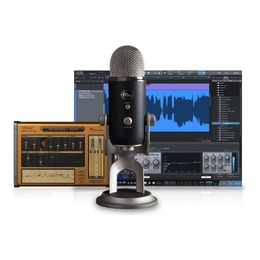 |
Blue Yeti - A hugely popular podcasting microphone, for its sound quality and price point. It is ideal when used by one person in a cardioid setting, however it has the option to switch between different settings. Headphone monitoring and gain control is also featured. This microphone is available in several variations, including the addition of an XLR connection. |
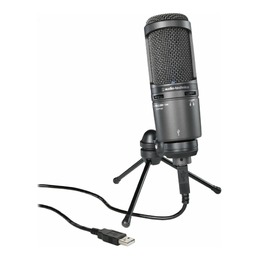 |
Audio-Technica AT2020USB+ - A large diaphragm condenser mic, one of the better ones for podcasting and voice work. It has a cardioid pattern, direct monitoring and gain control, and a desk stand. This mic is lighter than the Yeti. |
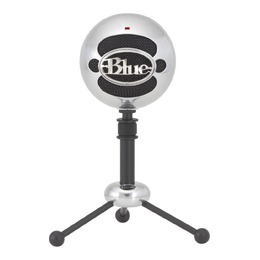 |
Blue Snowball - This uniquely shaped mic is great for vocal recordings, and has both a cardioid and an omni-directional polar pattern. It is very simple to use, however it has no headphone monitoring. |
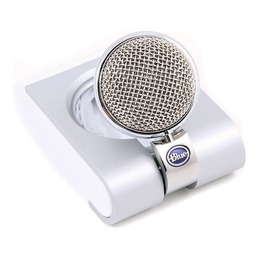 |
Blue Snowflake - A desktop condenser mic that is an excellent choice for those who are travelling podcasters. It sits easily on your desk or screen, and the mic pivots to the direction you need. |
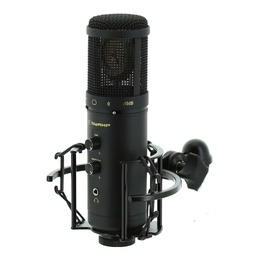 |
SWAMP SU600 - Without doubt, the SWAMP SU600 large diaphragm USB microphone has become the choice for podcasters who require excellent quality, diverse features and great value for money: 24-bit audio quality, zero latency headphone monitoring, gain control, low frequency attenuator switch, desktop tripod stand and shockmount. |
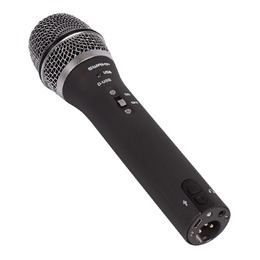 |
SWAMP D-USB - A dynamic type USB microphone, ideal for situations where outside or internal room noise as the mic as less sensitive then condenser equivalents. With a headphone output, you can monitor yourself and playback sound from a computer. Though in an XLR output in case you need to go analog at any stage. The mic has a warm tone to suit many vocal types, includes a desk stand and at only $79.99 is one of the best value podcasting mics on the market. |






